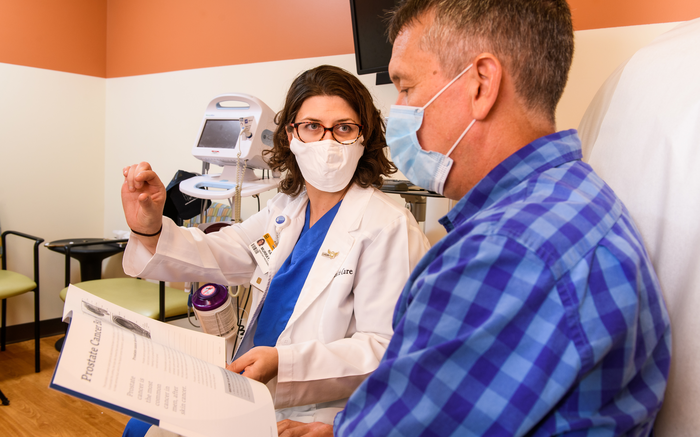More than 250,000 people undergo a transurethral procedure each year in the U.S., and up to 10 percent of those people will experience a postoperative infection. But researchers from the University of Missouri School of Medicine have discovered an indicator to potentially reduce infections.
A transurethral procedure is the most common type of prostate surgery. Surgeons access the prostate through the male patient’s urethra. In an effort to avoid postoperative infection, patients are often prescribed a preventative antibiotic before surgery. However, infections after transurethral procedures are still common.
“Current first-line recommended antibiotics include first-generation cephalosporins and trimethoprim-sulfamethoxazole,” said senior author Katie Murray, DO, assistant professor of surgery. “But we found different antibiotics may be more effective in certain parts of the country depending on that region’s profile of antimicrobial susceptibility.”
Murray’s research team studied antimicrobial susceptibility profiles in 40 states. Twenty-two of those had statewide data, an additional 15 states provided public medical school data and the remaining three provided a combination of data from private institutions or counties.
“After reviewing the data from each state, we discovered current first-line recommendations for preventative antibiotic regimens provide relatively poor coverage overall,” Murray said. “In most cases, we found aminoglycosides and third-generation cephalosporins to be more effective than current first-line antibiotics.”
In some cases, Murray and her team found non-first-line antibiotics were 10-15% more effective than first-line treatment against the most frequently identified organisms after transurethral procedures.
“Among the antimicrobials we studied, not one is clearly superior in all settings,” Murray said. “When possible, urologists should use up-to-date knowledge of local patterns, and large organizations should consider changing recommendations to reflect the geographic variability of susceptibility patterns.”
In addition to Murray, the study’s co-first authors included School of Medicine colleagues Geoffrey Rosen, MD, resident physician, and Shubham Kanake, MD, resident physician. Other contributors included Mojgan Golzy, PhD, assistant research professor; and Elizabeth Malm-Buatsi, MD, assistant professor of surgery.
Their study, “Antimicrobial Selection for Transurethral Procedures Across the United States: A State-by-State Antibiogram Evaluation,” was recently published in the journal Urology.
